Facts about Electric Generators
Posted by Admin / in Science Facts
There are many facts about electric generators that also changed the way people lived. Once people were able to generate electricity, manual labor became more automated. Electricity opened up more ways for people to communicate and move around. Electricity also gave people the source of energy needed to provide light at night.
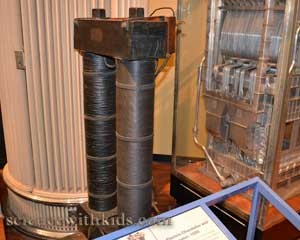
This 5 KW electric generator was installed by Thomas Edison to power lights in the steamship Columbia in 1880. It is on display in the Henry Ford Museum in Dearborn, MI
The History of Electric Generators
Electrostatic Generators
- The first known invention of an electric generator was in 1660. Otto von Guericke invented a machine that generated static electricity through friction. Otto von Guericke's machine became known as the electrostatic generator.
- The electrostatic generator was used for over 150 years by scientists to experiment with electricity because of the amount of voltage it is capable of generating.
- Other devices improved on Otto von Guericke's original design. Around 1882, the Wimshurst electrostatic generator was developed. In 1894 the Bonetti electrostatic machine was created. The Van de Graaff electrostatic generator was created in 1929.
Electromagnetic Generators (Turbines)
- In 1831 Michael Faraday first discovered that electricity is generated when a magnet is moved in or out of a coil wire.
- Faraday discovered that magnetic force pushes the free electrons in the conducting coil to create voltage and current.
- Faraday's invention came at a time when the Industrial Revolution was escalating. There was increasing demand for safe, efficient power for factories.
- Many inventors improved on Faraday's original design to generate more power efficiently. At first, generators were built where the power was needed, since there was no energy companies operating a power grid.
- Today, the original electromagnetic generator design concept is still used today. Improvements have been made on the size and efficiency of the generators.
- Nuclear power plants, coal burning power plants and oil and natural gas power plants all work by heating water which turns to steam. The steam then turns a turbine, which creates electromagnetic forces to convert the mechanical movement into electricity.
- Today's wind power uses blades to catch energy from the wind, resulting in a rotation movement. The turning blades are directly connected to a turbine, which converts the motion into electricity (electromagnetic generator).
- Hydroelectric generators use the fall of water through gravity to turn turbines which generate electricity.
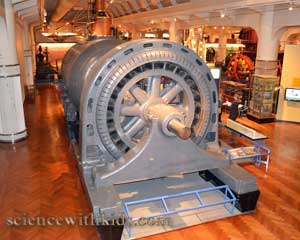
This is one piece of the large electric generator system used in Ford's Highland Park Plant from 1912 to 1930. The first assembly line was created there to make Model T Fords. The electric generators, which were powered with coal-gas and steam, supplied the power to the Highland Park Plant to run the factory.
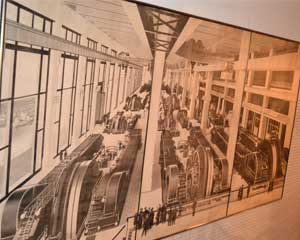
This image shows nine electric generators, each with an output of 4000 KW, powering the Highland Park plant when it produced Model T Ford vehicles. One of these generators, along with many other historical electric generators and motors are on display at the Henry Ford Museum in Dearborn, Michigan.
Interesting Facts about Electric Generators
- There are generators that produce direct current (DC) electric and generators that produce alternating current (AC).
- A DC generator is an efficient form of a DC motor working in reverse.
- An AC generator is also known as an alternator.
- The largest known single generator in the world is a 1750 MW generator which was installed in a nuclear power plant in Taishan, which is a coastal area in China.
- The largest combined electricity generating station is also in China. The Three Gorges Dam hydroelectric plant, which was completed in 2012, is capable of producing a sustainable 22,500 MW.
- By comparison the largest electricity generating plant that does not use hydroelectric power is the Kashiwazaki-Kariwa nuclear power plant in Japan. It is capable of producing 7965 MW.
- The third largest type of power generating plant uses fuel oil. It is the Shoaiba power plant in Saudi Arabia. This plant, however, uses some of it power to remove salt from seawater for drinking water.
- Amazingly, the largest wind power electricity generator station is the Gansu Wind Farm in China. It has a maximum output of 5160 MW at the designed plant wind speed.
- Learn how to make your own small electromagnetic generator with the Electric Generator Experiment.
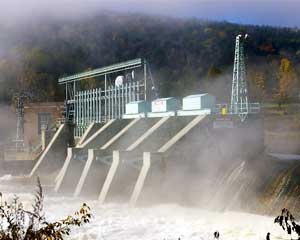
Electromagnetic generators are used at hydroelectric power plants to make electricity from moving water.
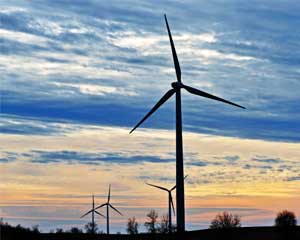
Wind generators use blades to capture energy from the wind. An electromagnetic generator attached to the shaft then transfers the rotation to electricity.
